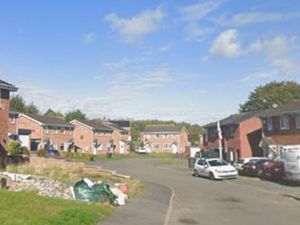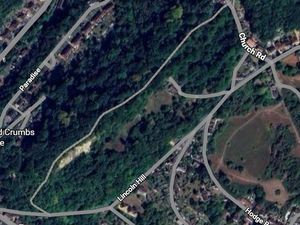Remains of Ludlow medieval well 'are close to collapse'
The remains of medieval well on a suburban Ludlow street are close to collapse, it has been claimed.
The sagging stone roof of St Julian's Well in Ludlow is in the centre of Livesey Road, under a tree on a traffic island in the residential street.
The structure may look like a pile of old stones, but it is Grade II listed and covers what is believed to have been the source of Ludlow's first public water supply, linked to the long-since demolished Austin Friary in the 14th Century. But councillors are concerned about the state of the monument after recent damage, possibly from traffic and the fact the well head is often used as a bench.
Tracey Huffer, Shropshire Councillor for Ludlow East, has said she is worried the structure may give way and hurt someone.
She said: "The well is in the middle of the road and has suffered in recent years.
"A number of stones on the well cover have been damaged. I don't know whether that is from passing traffic, from grit and salt on the road, or just because the monument is decaying with age.
"Teenagers sometimes sit on the cover at night and that might be why the cover seems to be sinking.
"We don't want the cover to collapse into the space beneath and people to be hurt.
"I have asked for a meeting with heritage officers as soon as possible to ensure the monument is safe and to get repairs underway." The well cover itself dates from the 18th century and has no door or opening into what is beneath.
However, the well was used by the Augustinian monks who lived in the friary at Galdeford nearby, of which little remains. By the 19th century only a precinct wall and gateway survived of the friary, which were also demolished in 1817.
Andy Boddington, councillor for Ludlow North and a former archaeologist, said: "Archaeological investigations suggest that there are well preserved remains of a water conduit below the well head.
"This would also be a good opportunity to conduct archaeological investigations and learn more about the well."
Either way, he said, it was clear the monument was "close to structural collapse" and needed urgent attention.





